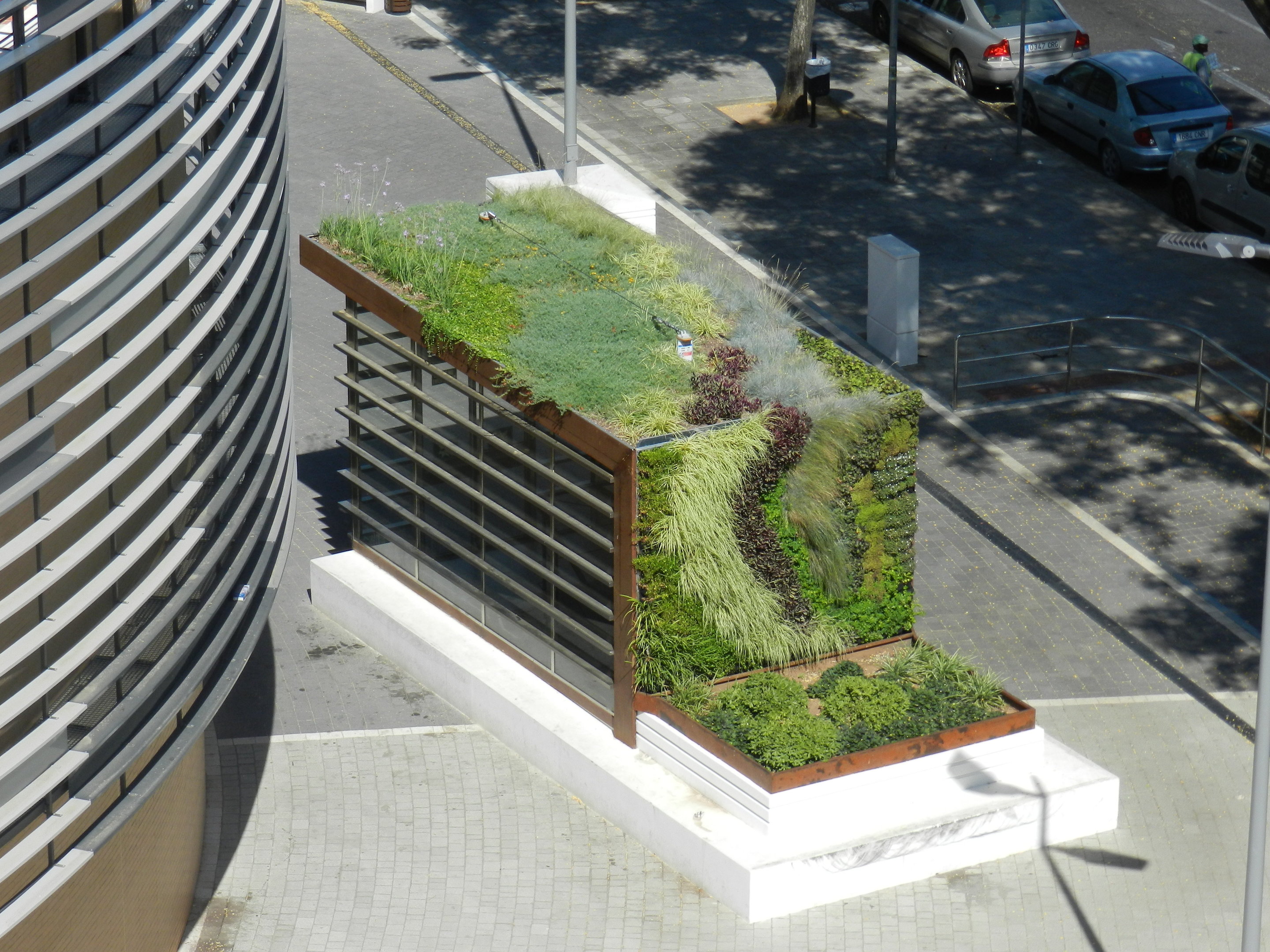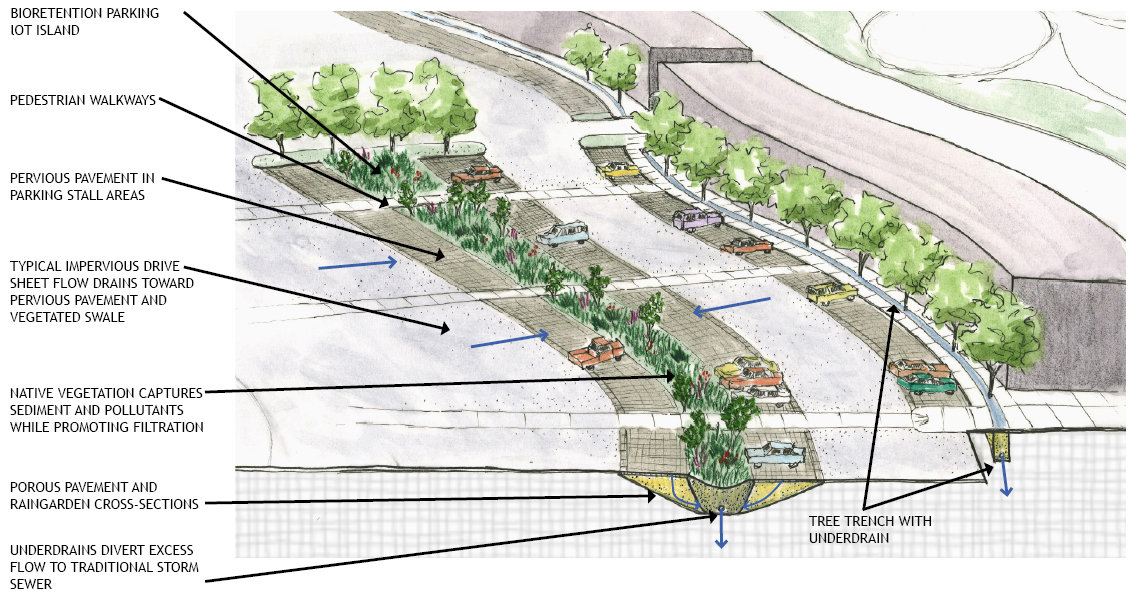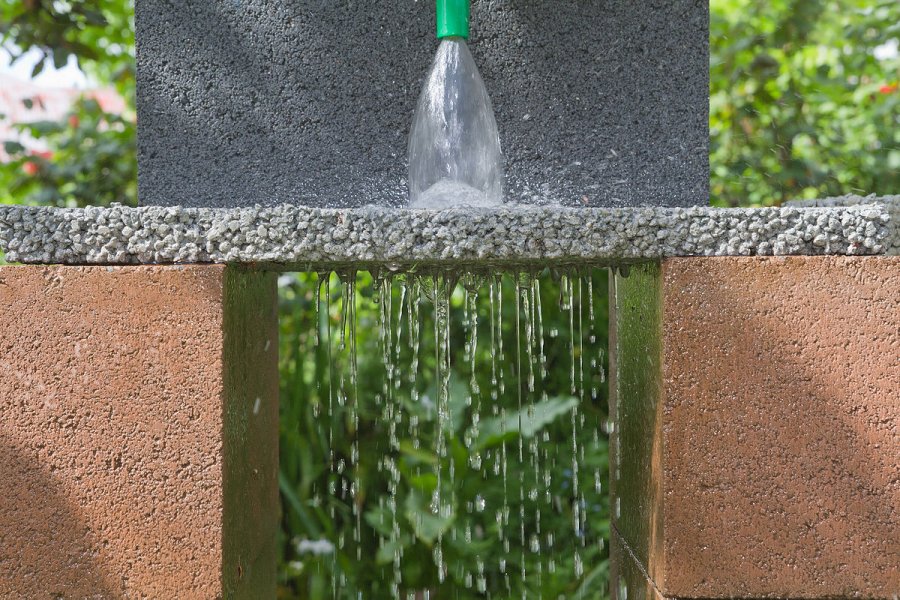Stormwater can be a problem for cities that leads to flooding and pollution. Permeable pavement, vegetated land cover, and green roofs a few innovative solutions to lower the risk associated with stormwater by allowing natural geologic systems to absorb the water rather than channel it into storm drains. This section offers a few solutions that can lessen the input for public drainage systems to avoid reaching capacity and overload sanitary sewer systems.
Idea
While Whitehall maintains a Stormwater Design Manual that states requirements for development of stormwater facilities and infrastructure as well as a flood damage reduction, more could be done by using infrastructure and naturalized landscaping features to avoid additional or mitigate existing impervious surfaces that increase runoff.
What is Permeable Pavement?
Permeable pavement, or porous pavement, is an alternative to traditional concrete or asphalt that allows water to penetrate its surface, seeping into soils beneath. These materials can reduce the need for salt in winter weather conditions, leading to not just less water runoff, but cleaner water runoff.
They can also can save money by reducing costs for salt, reducing costs for installation of piping or storm drains, and sloping/grading the site where it is being used. Because it acts like a filter of sorts, it additionally traps pollutants and suspended objects in runoff. The Green Building Alliance and EPA have useful guides for Permeable Pavement, its uses, and its benefits.
Green Roofs

A green roof is a building installation that allows vegetation to grow on its surface. These have many benefits, including the reduction of the urban heat island effect, potential production of vegetation for food, filter rainwater, reduction of storm runoff, energy conservation, reduction atmospheric carbon and air pollution, and reduction of noise pollution. They do this by turning an impervious surface, a normal rooftop, into a ecosystem that self-regulates. They have been shown to hold 60 to 100% of stormwater that falls on them and can increase the lifespan of a roof because of the ultraviolet light that is absorbed by the vegetation.
Strategies
Whitehall can begin using these materials in key locations for visibility or effectiveness. For example, creating a green roof at a bus stop shelter would be very visible to the public, and using permeable pavement solutions in large parking lots can reduce the overall negative impact of major contributors to impervious surface runoff.
Additionally, design strategies can be used to increase water retention in areas that contribute to stormwater runoff. The Minnesota Stormwater Manual includes many strategies for how this can be done, including parking lot drainage basins and biofiltration instrastructure.
 Schematic of Bioretention Parking Lot Island
Schematic of Bioretention Parking Lot Island
Rain gardens are another strategy to increase water retention. These are typically areas of native vegetation that require minimal maintenence in a depression of the ground to create a sloped 'bowl' for catching water runoff. These can be created in vitually any unused area, and are an effective and aesthetically pleasing strategy for reducing stormwater runoff and improving water quality.
Connections to other plans
This idea potentially addresses the following elements of the MORPC Regional Sustainability Agenda:
| Element | Description | Rationale |
|---|---|---|
| 1.6 | Reduce per capita energy consumption across all sectors. | Green roofs can increase insulation as well as reduce the urban heat island effect |
| 2.6 | Improve water quality in the Upper Scioto Watershed. | Each of the recommendations have the potential to filter water runoff and improve water quality |
